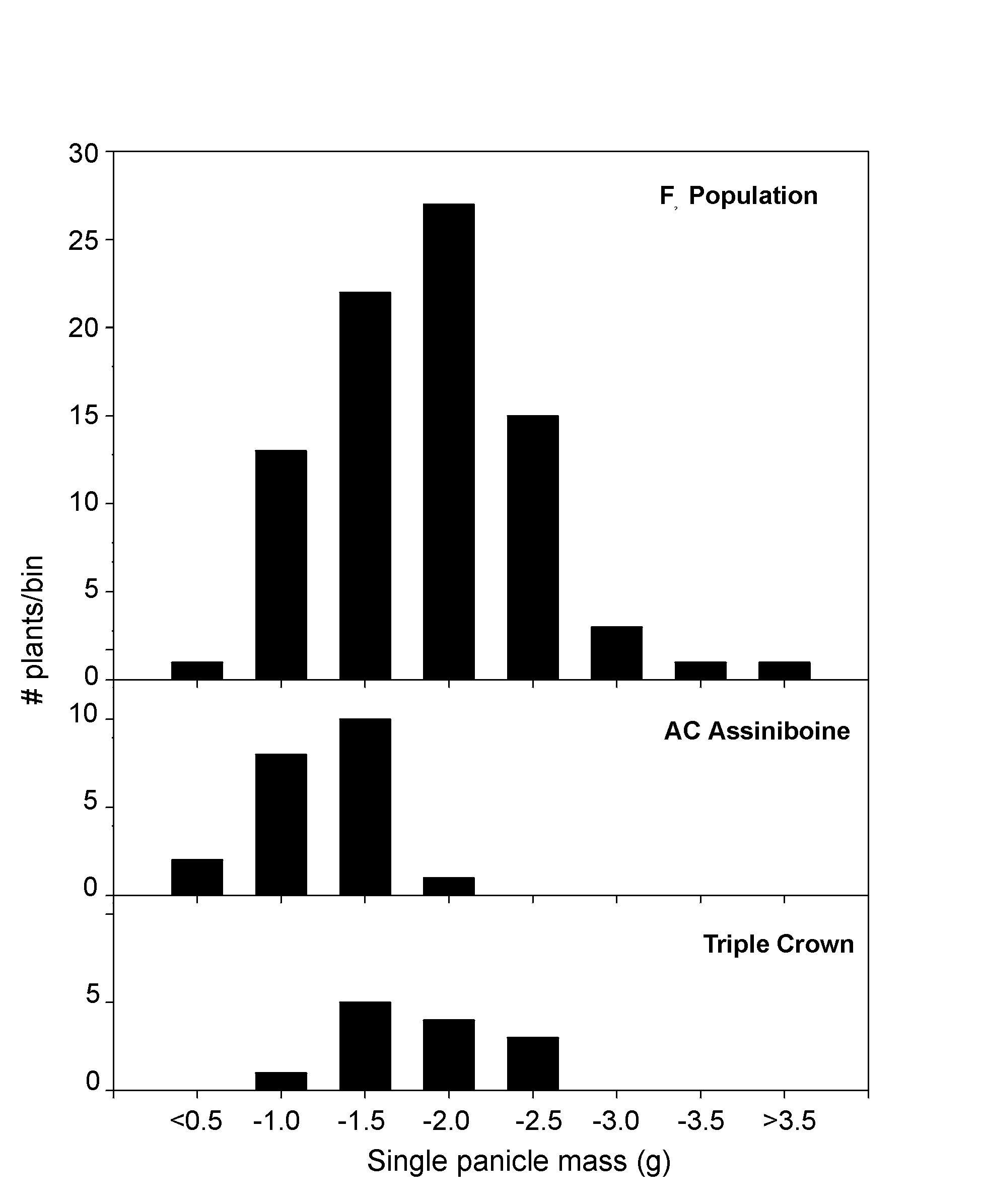
The essential aspect of our optimized virus inoculation protocols is
that they "simplify and exaggerate" the effects of BYD on oat plants grown
under controlled conditions. To "simplify", variability among seedlings
is reduced by using seed as uniform as experimental design allows, and
by maintaining relatively cool conditions (10 - 13 C) from seeding to the
1-2 leaf stage. Variablity in virus infection is reduced by applying
abundant viruliferous aphid inoculum to uncaged 1-2 leaf stage
seedlings and maintaining at 10 C for 10 days; non-inoculated control
seedlings are maintained in a separate growth cabinet under identical conditions.
After the 10 d inoculation access period, aphids are killed with insecticide
and the temperature raised and maintained at 20 C.
The high levels of inoculum per early stage seedling and prolonged inoculation access combined with intense lighting over the entire plant growing period serve to "exaggerate" the BYDV infection. To "simplify" the effect of BYD infection, tillers are trimmed during the elongation phase concentrating seed yield in a single panicle per plant. The parameters that identify the individual plants with the best performance under BYD disease pressure are height and seed yield (or panicle mass).
An example of QIA applied to the selection of F2 plants with superior
BYD tolerance is shown in the figures. For both parental checks,
height and panicle mass were reduced compared to non-inoculated controls.
Among the 83 F2 plants under BYD disease pressure, there were several that
performed better than any individual plant of the parental lines subjected
to similar disease pressure. The F3 seed of these best-performing
F2 plants will be grown out, subjected to QIA and the cycle repeated.
